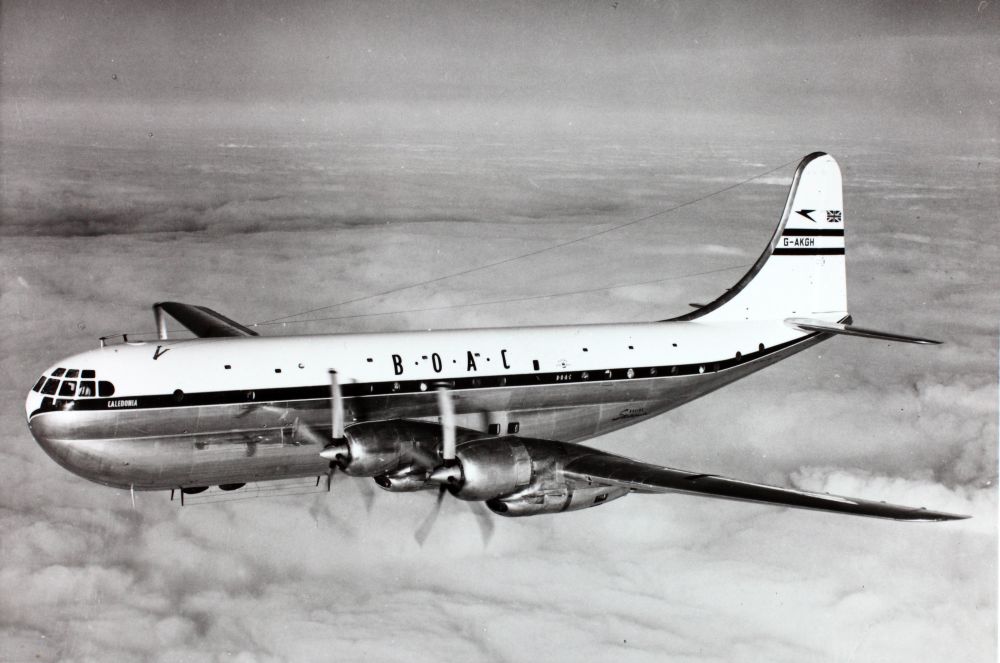

Technology developed during WWII led to advancements in civilian engineering after the war. Pressurized cabins and improved aeronautical design allowed companies to build larger planes that could fly higher and further than before. Boeing, which developed iconic heavy bombers like the B-17 Flying Fortress and B-29 Superfortress, adapted its large aircraft technology to create the 377 Stratocruiser airliner.

In 1939, the U.S. Army Air Corps issued specifications for a “superbomber” that could deliver a payload of 20,000 pounds on a target 2,667 miles away and fly at 400 mph. The next year, prototypes of Boeing’s pressurized bomber submission, designated the XB-29, were ordered. By January 1942, 500 of the new heavy bombers were on order. Despite production delays, the Superfortress began combat operations in Asia in 1944. It also delivered the two atomic bombs that ended WWII in 1945.

After WWII, the B-29 was updated with more powerful engines and a stronger structure. This post-war version was designated the B-50 and completed the first non-stop flight around the world. With its large size, heavy payload, pressurized cabin and long range, Boeing’s Superfortress was a prime candidate for a cargo conversion. Design on the experimental XC-97 began in 1942 and the aircraft made its first flight two years later. Officially introduced in 1947, the C-97 Stratofreighter featured the same tail, wing and engine layout of the B-29. However, it had a second lobe added on top of the fuselage and wing. Later iterations featured the upgraded engines, fin and rudder of the B-50.

The Stratofreighter had a useful payload of 35,000 pounds and could carry 134 troops or vehicles like 2 1/2-ton trucks. With its pressurized cabin, the C-97 could fly at high altitude and was more comfortable for its passengers and crew than older cargo planes. Boeing’s president, William Allen, saw the potential of the airframe and its ability to fulfill the demand for air travel after WWII. Despite not having any orders from airlines, Allen directed the construction of 50 377 Stratocruisers, derived from the C-97 Stratofreighter.

On November 29, 1945, Pan Am became the Stratocruiser’s launch customer with a $24.5 million order for 20 planes, the largest commercial aircraft order in history at the time. Pan Am’s confidence in the type came from a Boeing demonstration in which a 377 flew nonstop from Seattle to Washington, D.C. in just six hours and four minutes. The 377’s spacious, pressurized and air-conditioned cabin allowed up to 100 passengers on the main deck and another 14 on the lower deck lounge to fly comfortably and luxuriously. The Stratocruiser also had space for passenger berthing.

In addition to Pan Am, the 377 was purchased and flown by major carriers like TWA, United Airlines and the British Overseas Airways Corporation. Despite the luxury offered aboard the aircraft, the 377 was considered uneconomical for airlines. Reliability problems from its four powerful radial engines resulted in high operating costs. Moreover, introducing jetliners like the de Havilland Comet and Boeing 707 overshadowed the propellor-driven Stratocruiser. Most airlines divested their 377s in the 1950s and the last commercial operator, Transocean Airlines, went bankrupt in 1960.
